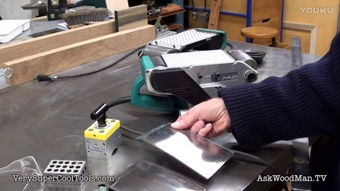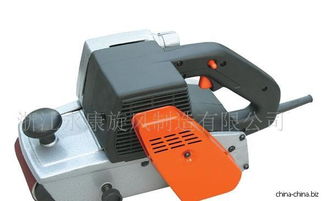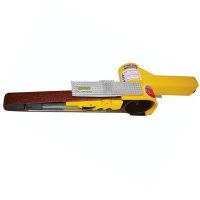Belt Sander Dust Collection: A Comprehensive Guide
When it comes to woodworking, a belt sander is an indispensable tool. However, the dust it generates can be a significant concern. This article delves into the various aspects of belt sander dust collection, providing you with a detailed understanding of how to manage this issue effectively.
Understanding Belt Sander Dust Collection

Belt sanders are powerful tools that can quickly smooth and finish wood surfaces. But, as they work, they produce a substantial amount of dust. This dust can not only be a nuisance but also pose health risks if inhaled. Therefore, it’s crucial to have an efficient dust collection system in place.
Types of Dust Collection Systems

There are several types of dust collection systems available for belt sanders. Each has its own advantages and disadvantages. Let’s take a closer look at them:
| System Type | Description | Advantages | Disadvantages |
|---|---|---|---|
| Direct Connection | Connects the sander directly to a dust collector or vacuum. | Simple to install, effective dust collection. | May require a powerful dust collector, limited mobility. |
| Portable Dust Collector | Compact and portable, can be moved around the workshop. | Easy to transport, good for small workshops. | May not be as powerful as larger dust collectors. |
| Shop Vacuum | Can be used as a dust collector with the right attachments. | Cost-effective, versatile. | May not be as efficient as a dedicated dust collector. |
Choosing the Right Dust Collection System

Selecting the right dust collection system depends on several factors, including the size of your workshop, the type of woodworking you do, and your budget. Here are some tips to help you make the best choice:
-
Assess your workshop space. If you have limited space, a portable dust collector might be the best option.
-
Consider the power of the dust collector. A more powerful unit will be more effective at collecting dust.
-
Think about the type of woodworking you do. If you work with large pieces of wood, a direct connection system might be more suitable.
-
Budget is also an important factor. Shop vacuums are generally more affordable than dedicated dust collectors.
Installing and Maintaining Your Dust Collection System
Once you’ve chosen the right dust collection system, it’s essential to install and maintain it properly to ensure optimal performance. Here are some tips:
-
Follow the manufacturer’s instructions for installation.
-
Regularly clean the dust collection system to prevent clogs and maintain efficiency.
-
Check the filter regularly and replace it as needed.
-
Keep the dust collection system well-maintained to ensure it continues to perform effectively.
Additional Tips for Effective Dust Collection
Here are some additional tips to help you manage dust collection effectively:
-
Use a dust collection bag or container to collect dust from small projects.
-
Keep your workspace clean and organized to minimize dust accumulation.
-
Use a dust mask or respirator when sanding to protect yourself from inhaling dust particles.
-
Consider using a dust separator to remove fine dust particles from the air.
In conclusion, belt sander dust collection is an essential aspect of woodworking safety and efficiency. By understanding the different types of dust collection systems, choosing the right one for your needs, and maintaining it properly, you can ensure a clean and healthy workspace.
